
Cleaning up
There are several common religious rituals in statue sprucing. The first is “cleaning up.” Whether the statue is carved from wood or clay, the material needs to be cleaned first. Before a statue sprucing master begins to carve a statue of a god, he must first clean the wood. After cleaning, he will perform the initiation of use of ax ceremony to inform the god which statue he plans to carve, such as Mazu, Nezha or Holy Emperor Guan, and pray that the carving process will be safe and smooth. Some initiation of use of ax rituals will be carried out in temples, depending on the instructions of the gods.
Placing treasures
The next step is “placing treasures,” which means putting treasures, incense, etc. into the statue, because people believe that adding treasures can increase the spiritual power of the statue. Nowadays, a common treasure-placing method involves placing hornet in the statue. Master A-fa mentioned that among the statues he has repaired, the earliest one dates back to the late Ming and early Qing dynasties. At that time, the statues did not have any hole dug inside and no treasures were placed. However, for the statues repaired later were from a few decades ago, most of them were placed with treasures. So, he estimated that the popularity of the trend treasure placing should not exceed two hundred years. However, Master A-fa once repaired a very old statue. The treasure inside was not a hornet, but a destiny note (written in very fine calligraphy with a brush on the cloth where the sculptor's birthday and prayers were written down), of which the main purpose is also to pray for a peaceful life.
Eye-opening
The next step is “eye-opening.” Through the ceremony of eye-opening, the god is invited to enter the wooden statue to bless the worshipers’ safety. During the winter vacation, February 6th happened to be the eye-opening ceremony of Wenchang Emperor in the Nanyao Temple. This statue of Wenchang Emperor was made by Master A-fa. Master A-fa was also invited to consecrate the eyes, so we also participated. This is a grand event. This Wenchang Emperor statue was made by Master A-fa. Master A-fa was also invited to perform the eye-opening ceremony. Therefore, we also luckily participated in this grand event. Wenchang Emperor is the god who blesses literary fortune and examinations. Many students will come to worship Wenchang Emperor before an exam. We hope that participating in the eye-opening ceremony this time will help improve our exam luck!
The ritual process of eye-opening is usually reported to the main god of the temple first. For example, on the day of our participation, Master A-fa first reported to Mazu in Nanyao Temple when performing the ceremony: “Today is December 27th of the Guimao Year, a good day and an auspicious time. We humbly invite Mazu to approve this eye-opening ceremony. The statue of which the eye-opening ceremony will be performed is Wenchang Emperor.” After reporting, Master A-fa recited the mantra to invite the god to come, then tapped the eyes of the statue with a red pen and specific positions on the body and recited the relevant mantra for eye-opening. Each position has an auspicious meaning. After the ceremony was completed, Wenchang Emperor was invited to sit on the altar and accept worship from believers.
Sitting on the altar
The last step is “sitting on the alter.” In a temple, the ceremony is completed by inviting the god to sit on the altar. However, at home, it is different. House owners need to measure the direction and auspicious numbers.
Statue repair
If there is a need to repair the statue, it is also necessary to perform a ritual to report to the god how the repair will be done, ask the god to stay in the incense burner first and leave the statue temporarily, and then ask the god to return inside the statue after the repair is completed.
It turns out that the statue sprucing process pays attention to every detail!
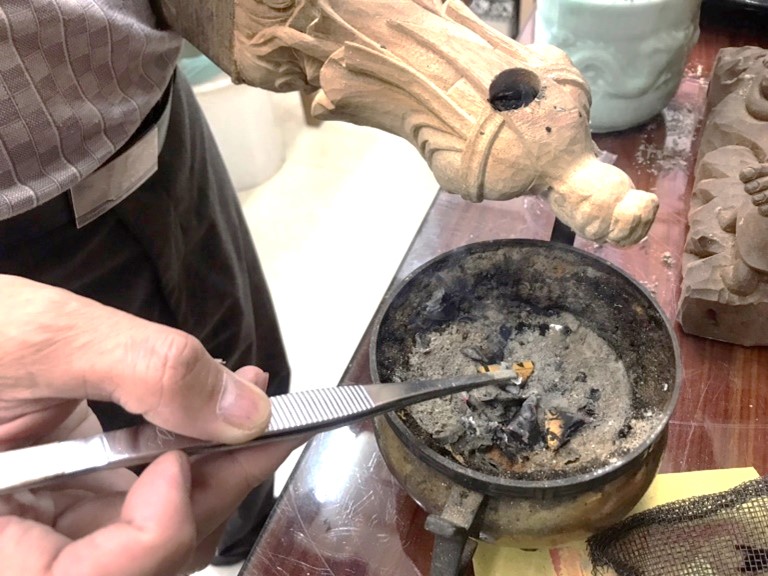
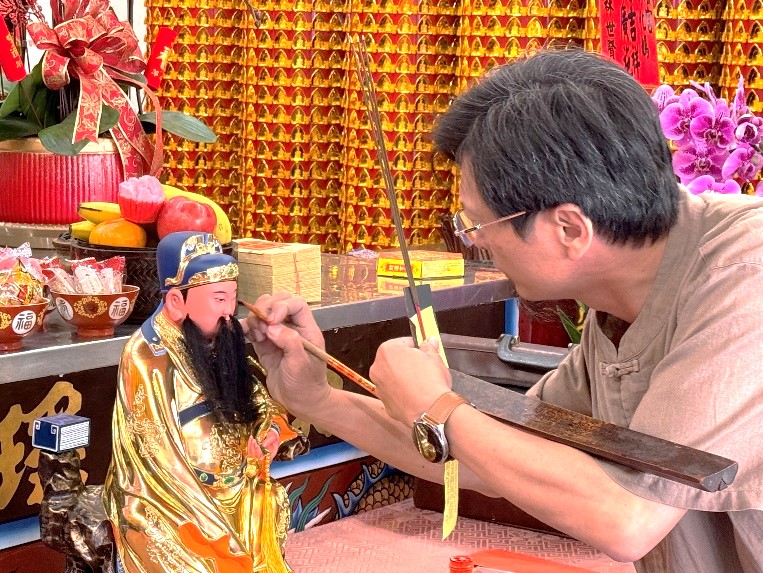

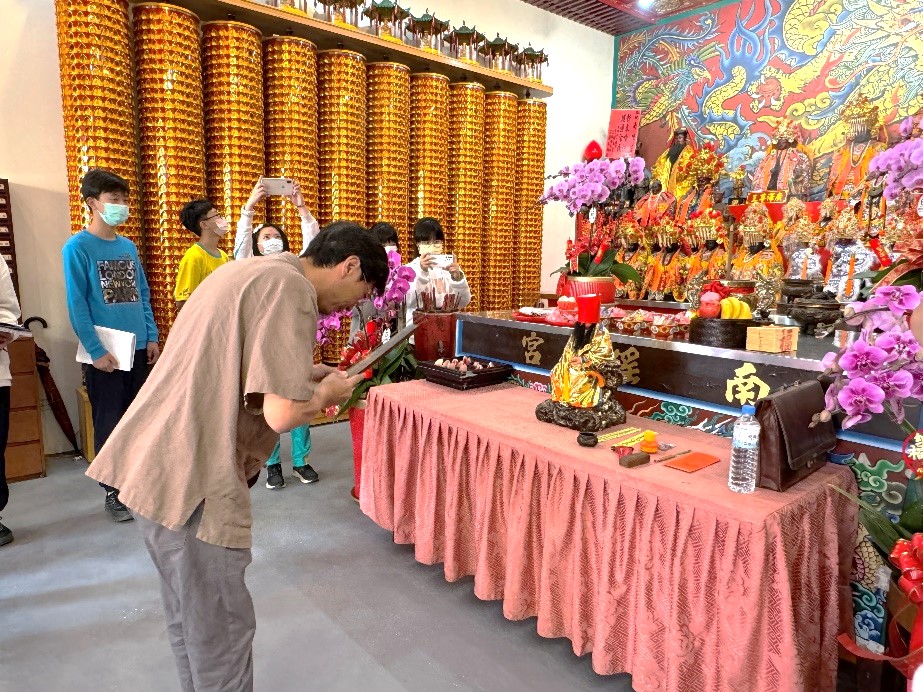
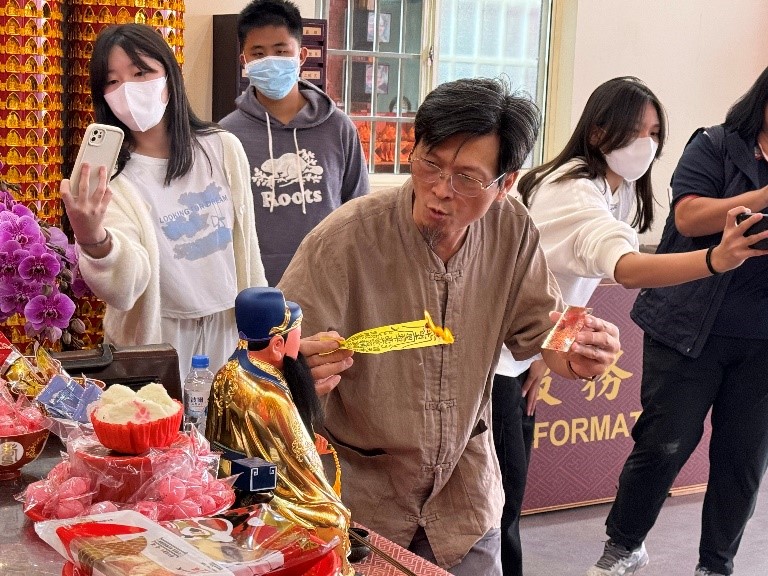
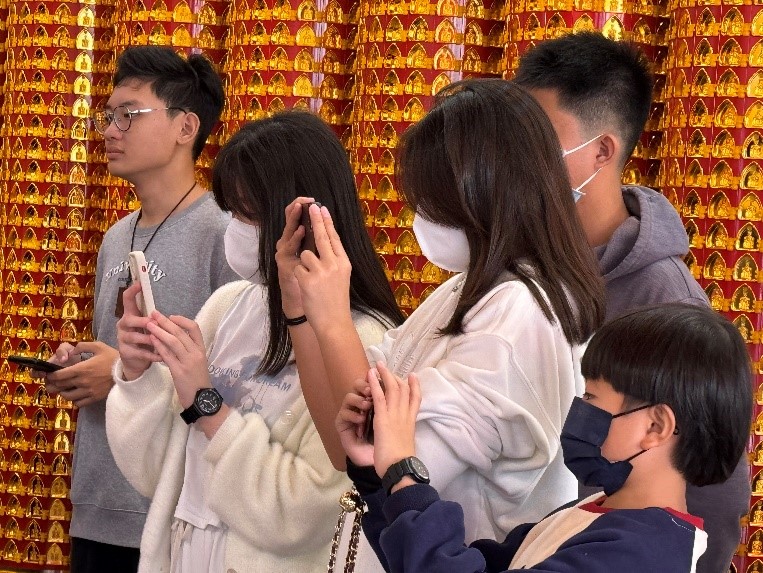
.png)

